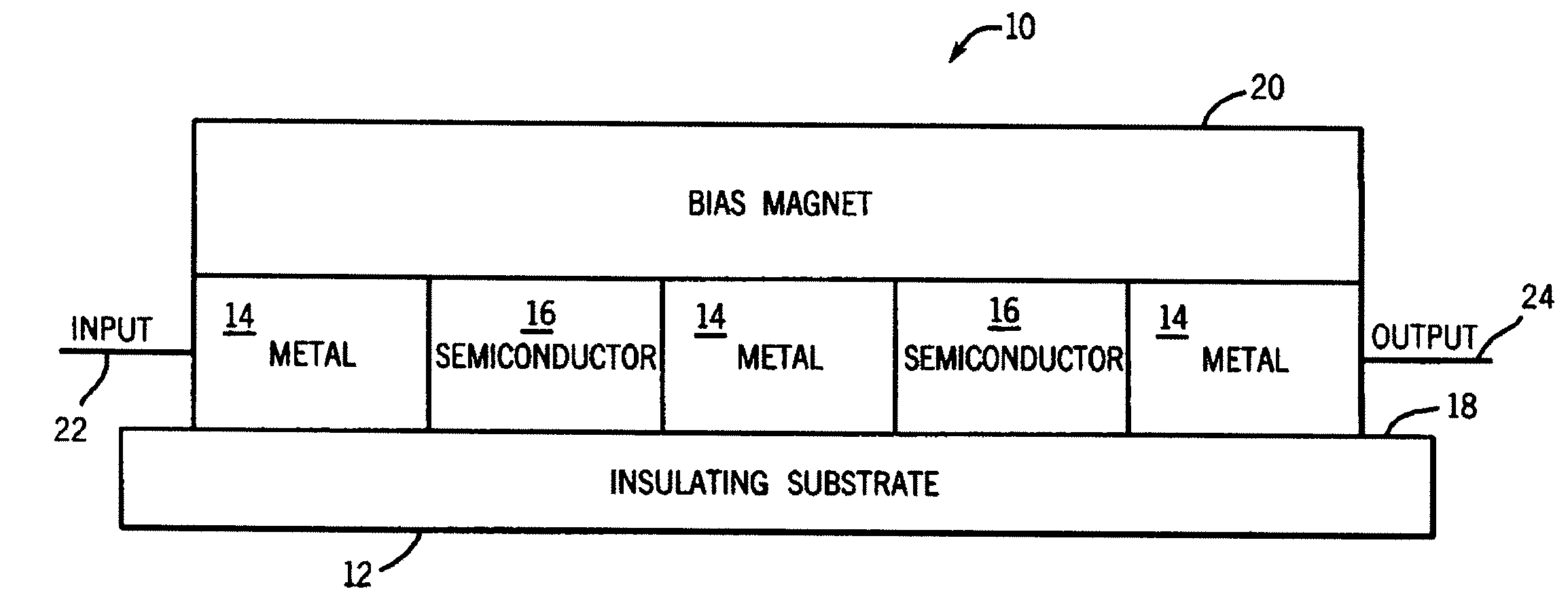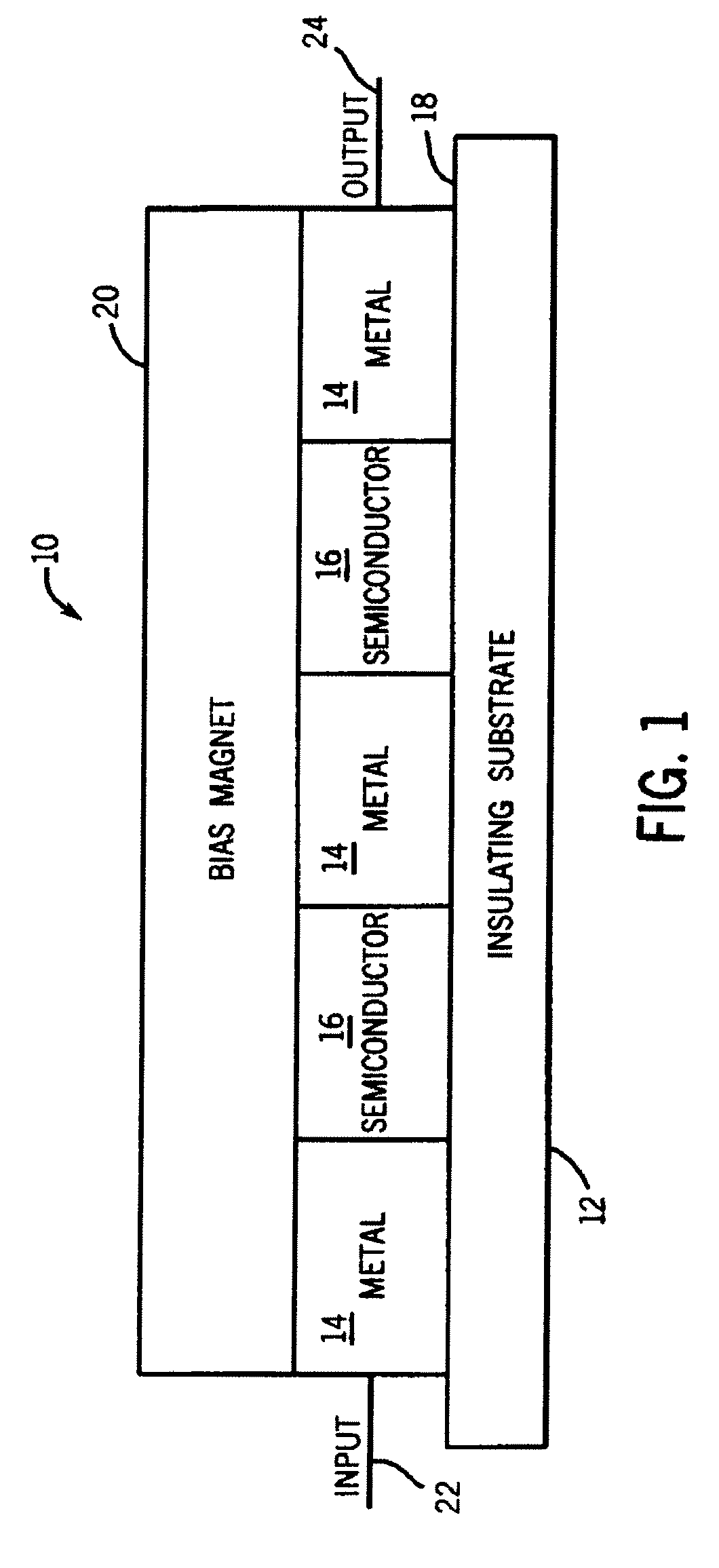Surgical navigation system with wireless magnetoresistance tracking sensors
a technology of wireless magnetoresistance tracking and surgical navigation system, applied in the field of surgical navigation system, can solve the problems of optical sensors not being optical navigation system is less accurate and unreliable when considering, optical sensors cannot be located inside the body,
- Summary
- Abstract
- Description
- Claims
- Application Information
AI Technical Summary
Problems solved by technology
Method used
Image
Examples
Embodiment Construction
[0021]Referring now to the drawings, FIG. 1 illustrates an enlarged side view of an exemplary embodiment of a magnetoresistance sensor 10. A magnetoresistance device is a device that provides a change in electrical resistance of a conductor or semiconductor when a magnetic field is applied. The device's resistance depends upon the magnetic field applied. As shown in FIG. 1, the a magnetoresistance sensor 10 comprises an insulating substrate 12, an alternating pattern of a metal material 14 and a semiconductor material 16 deposited on a surface 18 of the insulating substrate, and a bias magnet material 20 deposited over the alternating pattern of metal material 14 and semiconductor material 16. The alternating pattern of metal material 14 and semiconductor material 16 creates a composite structure with alternating bands of metal material 14 and semiconductor material 16. At least one input connection contact 22 is coupled to the metal material 14 and at least one output connection co...
PUM
 Login to View More
Login to View More Abstract
Description
Claims
Application Information
 Login to View More
Login to View More - R&D
- Intellectual Property
- Life Sciences
- Materials
- Tech Scout
- Unparalleled Data Quality
- Higher Quality Content
- 60% Fewer Hallucinations
Browse by: Latest US Patents, China's latest patents, Technical Efficacy Thesaurus, Application Domain, Technology Topic, Popular Technical Reports.
© 2025 PatSnap. All rights reserved.Legal|Privacy policy|Modern Slavery Act Transparency Statement|Sitemap|About US| Contact US: help@patsnap.com



